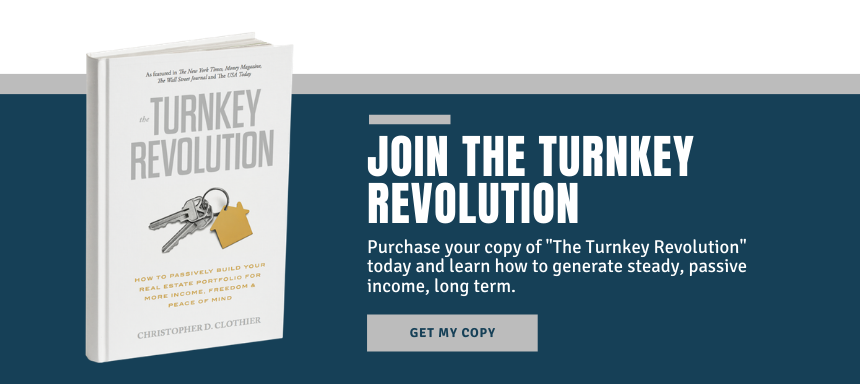
Finding success investing in real estate isn’t always as clear cut as it seems: it’s not enough to just have a good property with a good tenant managed by a good company. If you want to grow your investments, increase your passive income, and meet your financial goals, you’ve got to dive deep into money management and financial strategies.
What Does It Mean to Grow as an Investor?
Define Your Goals
Instead of comparing your success to that of other investors, you have to take your own personal finance goals into consideration. What do you want out of your investments? You aren’t a lesser investor if your idea of success isn’t turning into a real estate mogul. Maybe you’re satisfied with a handful of turnkey properties. That’s fine! What’s important is knowing what you want out of your real estate investments and crafting a plan to achieve those goals.
Write them down and define them: both in the short-term and in the long-term. Allow yourself both the big picture goals down to small, day-to-day and immediately achievable goals.
Push Things Forward
Once you have your goals defined, you have to set out to achieve them. That means ensuring that everything you do is moving the needle forward: making bigger deals, improving upon what you have, and taking every opportunity to learn and do things that will push you closer to those financial milestones.
Look at Your Burn Rate
Financially speaking, your burn rate is one of the most important numbers to consider: not just for investors, but for anyone looking for financial success.
Net VS Gross
There are two types of burn rate: net and gross. Your gross burn rate is simply how much capital you’re spending each month. Your net burn rate is your monthly losses (gross costs subtracted from your income). The percentage of capital you burn through each month is key, and your natural instinct may be to try to reduce your gross burn rate, which in turn reduces net burn rate: especially in the event that your income changes.
That, however, isn’t always the case. There are many ways in which you can reduce your burn rate—but you don’t always need to. In fact, trying to do so in the wrong places can actually hurt.
Burn Rate & Opportunity
Everything has an opportunity cost: even when you’re looking to reduce spending. When you cut back in areas, you’re losing some other value that isn’t financial. Making personal sacrifices: downsizing, lowering your personal spending budget, choosing to save instead of spend: these are all good ways to reduce your burn rate. However, beware of trying to cut too many corners in your actual investments. It’s very possible to overspend where you don’t have to: needless renovations, or even not taking full advantages of certain tax breaks.
Skimping on other expenses: like reliable property management or basic property security measures and inspections, can do a lot more harm than good at the end of the day. Don’t cut back where the added value is indispensable to your real estate business.
Burn is Neutral
Don’t think of burn as bad. Burn is a fact of life. We all spend and have expenses and there’s no way around it. What you need to look for is the effectiveness of your burn rate. Are you spending on the right things, or is your expense account getting bloated? How much do you have at the end of the month to take your investments further? Make an honest analysis. Identify where you can reasonably cut back if you feel you should—without compromising the quality of your investments.
Passive Income is Different
Remember: the burn rate for investors (passive income) is going to be different than for an entrepreneur, owner, or employee. Your passive income generally isn’t your only income. Your average worker has to consider things like W2 income taxes.
As real estate investors, you can afford to have a higher investment burn rate and it’s fine. As long as you are steadily working towards your financial goals and examining your expenses for bloat, you’re doing something right.
Related Article: 5 Golden Financial Strategies That Save Money Around the Clock
You Want to Cut Down on Your Burn Rate?
If you really feel like you want to cut down on your burn rate, examine yourself first. The easiest steps are in simply how you choose to live. Are you making extravagant purchases? Settling for nothing but the best? Taking too many expensive vacations or lunches? If you want to banish some burn, start with you. Make some sacrifices and start putting more into your savings instead.
After you’ve make personal cuts, look to your business expenses. Are you paying for things that you really need? Are there alternatives out there? Again, beware of cutting where it counts: a premium property management company is worth it.
So remember:
- If it’s not working, try something different.
- Wait on those big expenses — delay your gratification first.
- Don’t cut something if it will hurt your long-term sustainability.
- Monitor and graph your burn rate before it becomes a problem.
If you’re bothered by your burn rate, we guarantee there’s something you can do about it right now. Little by little, you can reach your burn rate goals and establish the capital you need to make your financial dreams a reality.













